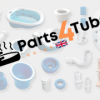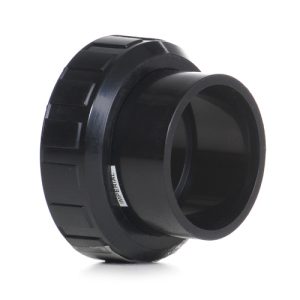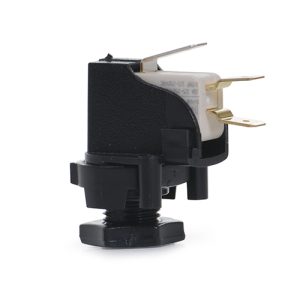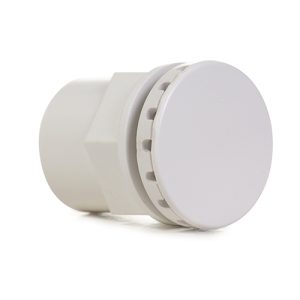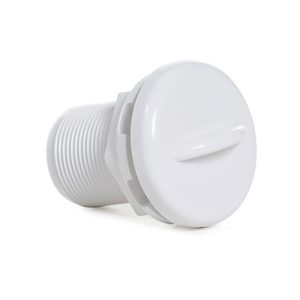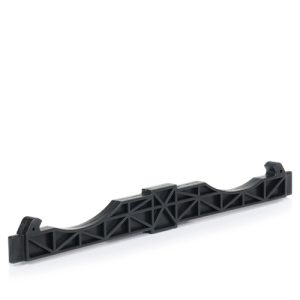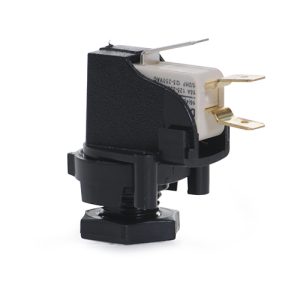BIO-UV10 Quartz Sleeve LG324
£131.20 Inc VAT
Out of stock
Want to be notified when this product is back in stock?
BIO-UV10 Quartz Sleeve LG324
Critical Protective Barrier for UV Lamp Performance
As a retailer of hot tub spare parts and pool equipment, I supply this precision-engineered quartz sleeve specifically designed for BIO-UV’s UV10 series water treatment systems. The LG324 quartz sleeve serves as the transparent protective barrier between the UV lamp and flowing water, enabling UV radiation transmission while maintaining the optimal thermal environment for lamp operation and protecting the fragile lamp from direct water contact. This component’s optical clarity and thermal properties are fundamental to UV system effectiveness, making it essential for reliable germicidal performance.
Understanding Quartz Sleeve Function
The quartz sleeve creates a sealed envelope around the UV lamp within the reactor chamber, allowing UV-C radiation at 254nm to pass through while preventing water from contacting the lamp directly. This separation serves multiple critical purposes: it maintains the lamp at optimal operating temperature despite varying water temperatures, protects the lamp from thermal shock that would occur if cold water contacted the hot lamp surface, prevents water chemistry from affecting lamp operation, and shields the lamp from physical damage during handling or water flow turbulence.
The sleeve’s high UV transmittance is fundamental to system performance. Pure fused quartz transmits over 90% of UV-C radiation at 254nm wavelength, far superior to conventional borosilicate glass which absorbs most germicidal UV. This exceptional transparency ensures maximum UV energy reaches the water flowing through the reactor, enabling effective pathogen inactivation at practical flow rates within the UV10’s compact design.
Material Properties and UV Transmission
The LG324 quartz sleeve is manufactured from high-purity fused silica (quartz) specifically selected for its exceptional UV transparency and thermal properties. Unlike ordinary glass containing significant metal oxide impurities that absorb UV radiation, fused silica consists of nearly pure silicon dioxide with minimal contamination. This purity enables UV transmission efficiency exceeding 90% at germicidal wavelengths, with some premium grades achieving 92-95% transmission.
The material’s low thermal expansion coefficient (approximately 0.5 x 10⁻⁶ per °C) provides excellent resistance to thermal shock, allowing the sleeve to withstand rapid temperature changes that would fracture conventional glass. This property is essential in UV systems where the sleeve interior may reach 100°C or higher from lamp operation while the exterior remains at water temperature. The quartz’s high melting point (approximately 1,600°C) and excellent chemical resistance ensure long-term dimensional stability despite continuous exposure to pool chemicals and temperature cycling.
Dimensional Specifications and System Integration
The sleeve’s dimensions (0.71m length, 0.12m diameter) are precisely matched to the BIO-UV10 reactor chamber and UV lamp specifications. The 0.71m length accommodates the 0.76m lamp while providing clearance for mounting hardware and seals at each end. The sleeve must span the reactor’s effective treatment zone, ensuring all water passing through receives adequate UV exposure as it flows in the annular space between the sleeve exterior and reactor wall.
The 0.12m diameter provides appropriate clearance around the 33W UV lamp, balancing several competing requirements. Smaller clearances bring water closer to the UV source for higher intensity exposure, but restrict flow and may cause excessive cooling or heating depending on flow rates. Larger clearances accommodate higher flow rates but reduce UV intensity at the water’s location. The LG324’s dimensions represent optimized geometry for the UV10’s design flow rates and treatment requirements.
Thermal Management and Lamp Performance
The quartz sleeve plays a crucial role in thermal management by creating an insulating air gap between the lamp and water. This gap helps maintain the lamp’s optimal operating temperature around 40°C at the coldest point, where mercury vapour pressure maximizes 254nm UV output. Without this thermal barrier, flowing water would cool the lamp excessively, reducing mercury vapour pressure and dramatically diminishing UV-C emission.
The sleeve’s thermal properties also prevent dangerous thermal shock to the UV lamp. If cold water contacted a hot operating lamp directly, the sudden temperature differential could fracture the lamp’s quartz envelope catastrophically. The sleeve absorbs gradual temperature changes and distributes thermal stress across its surface, protecting the expensive UV lamp from temperature-related failures.
Fouling and Maintenance Requirements
Over time, mineral deposits, biofilm, and organic matter accumulate on the quartz sleeve’s exterior surface where it contacts flowing water. This fouling blocks UV transmission, reducing the UV dosage delivered to water and compromising disinfection effectiveness. Hard water with elevated calcium and magnesium concentrations accelerates mineral scaling, while iron, manganese, and organic compounds create additional deposit types that obstruct UV light.
Regular cleaning maintains UV transmission efficiency and system performance. Most maintenance schedules recommend sleeve inspection and cleaning during annual lamp replacement, though water quality may necessitate more frequent attention. Cleaning involves removing the sleeve from the reactor, gently wiping the exterior surface with appropriate cleaning solutions (dilute acids for mineral deposits, appropriate solvents for organic films), and thoroughly rinsing before reinstallation. The sleeve must be handled carefully during cleaning, as quartz is brittle and susceptible to fracture from impact or excessive force.
Inspection and Replacement Criteria
Quartz sleeves require replacement when cleaning no longer restores adequate UV transmission or when physical damage compromises integrity. Inspection criteria include checking for cracks, chips, or scratches on the quartz surface that scatter UV light or create stress concentration points leading to fracture. Clouding or permanent discoloration that cannot be removed through cleaning indicates UV transmission degradation requiring replacement.
Solarization, a phenomenon where certain quartz grades lose transparency after prolonged UV exposure, may necessitate replacement in high-intensity UV applications, though quality quartz selected for germicidal lamps typically resists this effect. Any visible damage to O-ring grooves or sealing surfaces also indicates replacement is required, as compromised seals allow water intrusion that could damage electrical components or cause system leaks.
Installation Procedures and Handling
Proper quartz sleeve installation requires meticulous attention to prevent damage and ensure correct sealing. The sleeve must never be touched on its optical surfaces with bare hands, as oils from skin can create hot spots when the lamp operates, potentially causing localized stress fractures. Cotton gloves or clean lint-free cloths should be used during handling.
During installation, the sleeve must be positioned concentrically within the reactor chamber with proper O-ring placement at both ends to ensure watertight sealing. The O-rings typically slide onto the sleeve at specified locations, with one end inserting into the reactor chamber until it seats against internal supports (such as the quartz guide), while the gland nut at the opposite end compresses the other O-ring to complete the seal. Installation must proceed carefully to avoid cross-threading, over-tightening that could crack the quartz, or misalignment that allows water leakage or UV lamp contact with the sleeve interior.
Impact on System Performance
The quartz sleeve’s condition directly determines UV system effectiveness. Even modest fouling reducing UV transmission by 20-30% can compromise pathogen inactivation, potentially allowing harmful microorganisms to pass through inadequately treated. The sleeve’s transparency, cleanliness, and structural integrity represent the critical optical path through which all germicidal UV must pass, making this component’s maintenance essential for reliable water treatment.
Quality quartz sleeves maintain excellent UV transmission throughout their service life when properly maintained, often lasting through multiple UV lamp replacement cycles before requiring replacement. This longevity makes the quartz sleeve a valuable long-term investment in UV system infrastructure, though its performance depends entirely on proper maintenance and timely cleaning to prevent fouling-related transmission losses.
Technical Specifications
| Specification | Details |
|---|---|
| Product Name | BIO-UV10 Quartz Sleeve LG324 |
| SKU | 7111676050 |
| Part Number | LG324 |
| Category | UV System Spare Parts |
| Compatible Equipment | BIO-UV UV10 Series Systems |
| Weight | 1.28 kg |
| Dimensions (L x W x H) | 0.71m x 0.12m x 0.12m |
| Volume | 0.010224 m³ |
| Material | High-Purity Fused Silica Quartz |
| UV Transmission | >90% at 254nm |
| Application | UV Lamp Protection and Thermal Management |
| Temperature Resistance | High Thermal Shock Resistance |
Preserving UV System Effectiveness
The BIO-UV10 Quartz Sleeve LG324 exemplifies how seemingly simple components perform sophisticated functions essential to UV water treatment effectiveness. By providing exceptional UV transparency while creating the thermal environment necessary for optimal lamp performance and protecting expensive UV lamps from water contact, this precision quartz component enables reliable germicidal water treatment in compact system configurations. Regular cleaning to maintain optical clarity, careful handling to prevent damage, and timely replacement when degradation occurs protect the UV system investment while ensuring consistent water quality. The quartz sleeve’s role as the critical optical interface through which all germicidal UV must pass makes its proper maintenance fundamental to achieving the pathogen inactivation performance that justifies UV technology adoption in pool and spa applications.
| Weight | 1.28 Kilograms |
|---|---|
| Length | 0.71 Meters |
| Width | 0.12 Meters |
| Height | 0.12 Meters |
| Volume | 0.010224 CubicMeters |
| Supplier | GoldenC |
Related products
Spares

